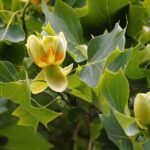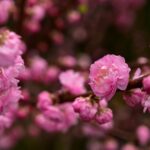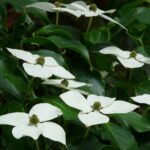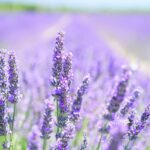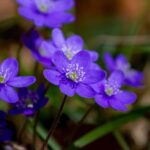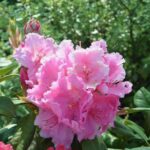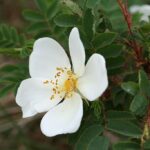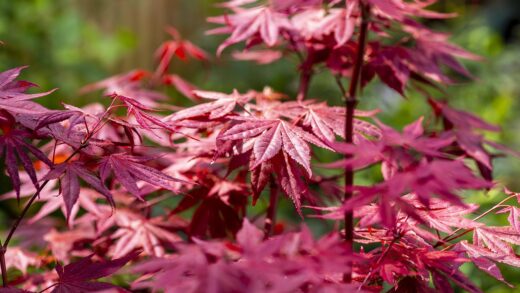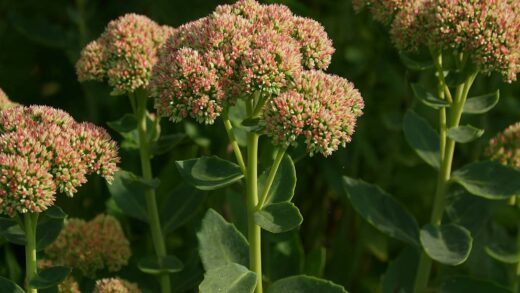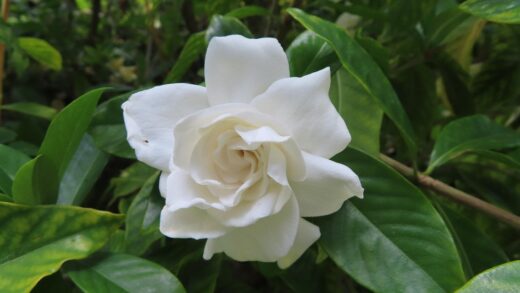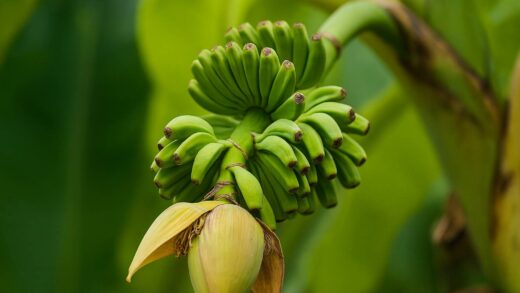While plumerias are generally robust and resilient plants, they are not immune to the challenges posed by various diseases and pests. A vigilant grower who knows what to look for can often catch and manage these issues before they cause significant harm. Most problems, from fungal infections to insect infestations, are preventable or treatable with good cultural practices and timely intervention. Understanding the common culprits, recognizing their tell-tale signs, and knowing the appropriate control measures are essential skills for maintaining the health and beauty of your tropical plumeria.
Common fungal diseases
One of the most prevalent diseases to affect plumerias is rust, caused by the fungus Coleosporium plumeriae. This affliction is easily identified by the appearance of small, yellow-orange pustules of powdery spores on the undersides of the leaves. The corresponding upper surface of the leaf often develops yellow or pale spots. In severe infestations, rust can cause widespread defoliation, weakening the plant and reducing its aesthetic appeal. The fungus thrives in warm, humid conditions with poor air circulation.
To manage plumeria rust, sanitation and airflow are key. Promptly remove and destroy any infected leaves as soon as they are noticed to prevent the spores from spreading to healthy foliage; do not place infected leaves in your compost pile. Improving air circulation around the plant by providing adequate spacing can also significantly reduce the humidity around the leaves, making the environment less hospitable for the fungus. In persistent cases, applying a fungicide containing myclobutanil or another rust-specific active ingredient can be an effective treatment.
Black tip fungus is another fungal issue that can be alarming for growers. As the name suggests, it causes the new, tender growing tips of the branches to turn black, shrivel, and die. This can be particularly disheartening as these tips are where new leaves and flowers would normally emerge. This disease is most common during cool, damp weather, especially when the plant is emerging from dormancy in the spring. It can halt the growth of an affected branch for the entire season.
Preventing black tip fungus involves protecting the plant from cold, wet conditions, especially during its vulnerable spring growth phase. If possible, move potted plants to a sheltered location during prolonged periods of cool rain. If infection occurs, the best course of action is to prune the affected tip back to healthy, green tissue, making the cut in a clean, white section of the stem that oozes the characteristic milky sap. Sterilize your pruning tool between each cut to avoid spreading the fungal spores to other branches.
More articles on this topic
Preventing and treating rot
Root rot is undoubtedly the most dangerous and deadly disease for plumerias, and it is almost always a result of improper watering and poor soil drainage. This condition is caused by soil-borne pathogens, like Phytophthora and Pythium, which thrive in waterlogged, anaerobic (oxygen-deprived) soil. The fungi attack and decay the plant’s root system, destroying its ability to absorb water and nutrients. The symptoms above ground, such as yellowing leaves and a wilting appearance, often don’t appear until the damage below the soil is extensive.
Prevention is the only truly effective strategy against root rot. This begins with using an extremely well-draining soil mix, typically a combination of cactus soil and a high percentage of perlite or pumice. It is equally critical to plant your plumeria in a container with multiple large drainage holes. Most importantly, you must adhere to a watering schedule that allows the soil to dry out significantly between thorough waterings, as consistently moist soil is the primary trigger for this fatal disease.
If you suspect root rot, which may be indicated by a soft, mushy base of the stem, immediate action is required. Carefully remove the plant from its pot and wash away the soil to inspect the roots. Healthy roots are firm and whitish, while rotted roots will be brown or black, mushy, and may have a foul odor. Using a sterile knife or pruners, you must surgically remove all affected root and stem tissue, cutting back until you see only healthy, white tissue.
After trimming away all the decayed material, you may want to treat the remaining healthy parts with a fungicide drench as a precautionary measure. Allow the cutting or the salvaged portion of the plant to dry and callus over for several days, just as you would with a new cutting. Once a callus has formed, you can attempt to re-root the plant in a fresh, sterile, and very fast-draining potting medium. Water very sparingly until new growth appears, as the plant is extremely vulnerable to rot during this recovery period.
More articles on this topic
Managing common sucking insects
Spider mites are a common pest of plumerias, especially in hot, dry conditions or when plants are brought indoors for the winter. These tiny arachnids are difficult to see with the naked eye, but their presence is indicated by a fine, silky webbing on the undersides of leaves and around new growth. They feed by piercing plant cells and sucking out the contents, leading to a stippled or speckled appearance on the leaves, which may eventually turn yellow or bronze and drop off.
Controlling spider mites can often be achieved with simple mechanical and cultural methods. Since they thrive in dry conditions, regularly misting the leaves can create a less favorable environment for them. A strong spray of water from a hose can also be effective at physically dislodging a large portion of the population. For more persistent infestations, spraying the plant thoroughly with insecticidal soap or horticultural oil, ensuring complete coverage of the undersides of the leaves, is an effective and low-toxicity treatment.
Scale insects are another type of sucking pest that can trouble plumerias. These insects appear as small, immobile bumps on the stems and leaves, often resembling tiny shells. They secrete a sticky substance called honeydew, which can lead to the growth of sooty mold, a black fungus that grows on the honeydew. Scale insects feed on the plant’s sap, and a heavy infestation can weaken the plumeria and cause stunted growth.
Treating a scale infestation often requires a bit more persistence. For a light infestation, you can manually remove the insects by dabbing each one with a cotton swab dipped in rubbing alcohol, which dissolves their protective waxy coating. For larger outbreaks, horticultural oil sprays are very effective. The oil works by suffocating the insects, so it is crucial to achieve thorough coverage of all stems and leaf surfaces. Multiple applications may be necessary to control newly hatched crawlers.
Dealing with other invertebrate pests
Mealybugs are small, soft-bodied insects covered in a white, cottony wax, which often gather in protected areas like leaf axils and new growth clusters. Like scale insects, they are sap-suckers that produce honeydew, leading to sooty mold and weakened plant health. Their waxy coating provides them with some protection from predators and contact insecticides, making them challenging to control.
Similar to scale insects, small mealybug populations can be spot-treated with a cotton swab and rubbing alcohol. For more widespread issues, insecticidal soap or neem oil sprays can be effective, but thorough application is key to penetrating their cottony nests. In some cases, a systemic insecticide, which is absorbed by the plant and poisons the insects as they feed, may be necessary for severe and persistent mealybug infestations, particularly on valuable specimens.
Whiteflies are another common pest, appearing as tiny, moth-like insects that fly up in a cloud when a plant is disturbed. Both the adults and their nymphs feed on the undersides of the leaves, sucking sap and causing yellowing and leaf drop. They also excrete honeydew, contributing to the growth of sooty mold. Whiteflies reproduce rapidly, so early detection and control are important.
Managing whiteflies can be a challenge due to their mobility. Yellow sticky traps are a useful tool for monitoring their presence and trapping flying adults. Regular sprays with insecticidal soap or neem oil, focused on the undersides of the leaves, can help to control the nymphal stages. Encouraging natural predators like ladybugs and lacewings in an outdoor garden setting can also provide a significant level of biological control.
Integrated pest management strategies
An Integrated Pest Management (IPM) approach is the most sustainable and effective way to keep your plumeria healthy. This strategy begins with prevention and regular monitoring. A healthy, well-cared-for plant growing in its ideal conditions (full sun, proper watering, good nutrition) is naturally more resilient to pests and diseases. Make it a regular habit to closely inspect your plants, including the undersides of leaves and stems, for any early signs of trouble.
Good sanitation is a cornerstone of IPM. This includes keeping the area around your plants clean and free of fallen leaves and debris, which can harbor pests and fungal spores. When pruning, always use tools that have been sterilized with rubbing alcohol or a bleach solution to prevent the transmission of diseases from one plant or branch to another. Promptly removing and disposing of any diseased plant material is also a critical sanitation practice.
Embrace biological controls whenever possible, especially in an outdoor garden. Many beneficial insects, such as ladybugs, lacewings, and predatory mites, are natural enemies of common plumeria pests like spider mites and mealybugs. You can attract these helpful insects by planting a diversity of flowering plants, or you can purchase and release them directly onto your plants as a targeted form of pest control. Avoiding the use of broad-spectrum chemical pesticides will help protect these beneficial populations.
When chemical intervention is necessary, always opt for the least toxic option first. Horticultural oils, insecticidal soaps, and neem oil are effective against a wide range of soft-bodied insects and some fungal diseases, while having a lower impact on beneficial insects and the environment compared to synthetic pesticides. If a stronger product is required, use it sparingly and target the application directly to the affected areas, always following the label instructions for safety and effectiveness.








